
Publisher:
Bonnie King
CONTACT:
Newsroom@Salem-news.com
Advertising:
Adsales@Salem-news.com

~Truth~
~Justice~
~Peace~
TJP
Jul-27-2012 02:01

 TweetFollow @OregonNews
TweetFollow @OregonNews
In-Depth: Rohingyas: Myanmar's Most Senior Indigenous Race is Also World's Most Persecuted
Zaw Lwin Oo for Salem-News.comThe Past is never dead. It’s not even past.
Wlliam Faukner (1897-1962)
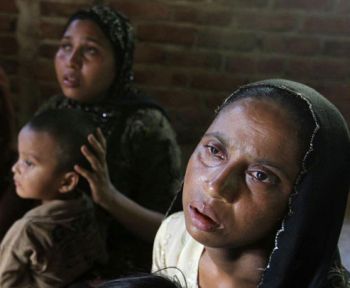 Weary face of a Rohingya woman from Burma. Photo: bikyamasr.com |
(RANGOON, Myanmar) - Myanmar government and Myanmar media including international media in Burmese version claimed that there is no Rohingya in Myanmar history, they had never heard the word Rohingya before independence. I would like to prove that Rohingyas are the most senior indigenous race who has been continuously tortured and deprived all their basic fundamental rights by Myanmar dictators for many decades. I don’t use my own word for my claim; I am quoting only the famous historians. I appreciate your attention.
Arakan and Rakhine
"The area now known as north Arakan had been for many years before the 8th century the seat of Hindu dynasties; in 788 A.D. a new dynasty, known as the Chandras, founded the city of Vesali".
Ref: Mauriee Collis, The 50th Anniversary Publication No.2 of BRSJ, p.486
The northern face of the Anandachandra Inscription was probably inscribed by Chulataingchandra (951-957 A.D), the last king of Vaisali dynasty, in about 10th century A.D in old Bengali language which is to be nearly indistinct and which clearly indicates that the kings and the people of Arakan were Bengali Hindus as mentioned by Professor D.G.E. Hall of History Department of the University of Rangoon.
Ref: U San Tha Aung, Anandachandra, p.10. D.G.E. Hall, Burma, p.57
The word "Arakan" was a derivation of the ancient word 'Arakha-de-sha" means the country of Arakan or land of Arakan, a Persian word which is found in line forty of Anandachandra inscriptions of Shitethaung pillar. "The geographical position of Arakan makes it likely that it received Indian colonies and Indian culture and civilization from a remote antiquity, a period certainly anterior to that of Indian colonization in Burma, and probably centuries before the Christian Era".
Ref: R.C Majumdar, Hindu Colonies in the Far East, P.202.
I found that Arakan is neither Burmese word nor Rakhine word; it is Persian word as Persian say Namaze Arkan means principle of Namaz Prayer. Rohingya is also Persian word; derived from Ronak Gah . Ronak means lightening, Gah means land, place.
The Mahamuni image has been regarded as the tutelary deity of Arakan [1] . It was in the Mahamuni shrine on the summit of Sirigutta Hill which lies just to the north of Dhannyavati. The name “Sirigutta’’ is a Sanskrit name. This site is older than Vaisali and Myauk-U. It was a sacred hill which went right back to the period of the Hindu migration. There were bas-reliefs of Hindu deities around the foot of the image[2] . But the style of the deities showed that they belonged to the period before 957A.D, when Arakan was an Indian Land, the people of which were Hindus similar to those of Bengal[3] 1. Hindu Colonies in the Far East, p.203.
2. The 50th Anniversary Publication No.2 of BRSJ, P.486
3. D.G.E. Hall Burma, p.57. A Brief Note on the old capitals of Arakan . The land of the Great Image, p.135. Maurice Collis, Indo Hidden Burma, pp.124, 134, + 137. The Arabs and Persians were enterprising seafarers as Islam gave a new impetus to their shipping and they carried on trade by the sea-route with many parts of the world including Arakan and Burma when South - East Asian trade route fell into their hands since 7th century A.D. and they controlled the maritime trade between the Red Sea and China. As in the case of western India, there were Arab Muslim settlements on Arakan and Chittagong coasts from the eight century.
Ref: Donal N.Wilber, Pakistan, its people, its society its culture,pp.12&13
The Arabs who were master of the Eastern Seas from the 7th to the 16th century not only heard of Arakan and Burma but also visited them. During this period Arabs influence was very strong and they controlled sea trade between the Red Sea and China including Arakan and Burma and the Indian Ocean was prominently the great highway of their commercial roads. At that time Burma was known to them as Arakan and lower Burma.
Ref: Harvey, History of Burma, p.10
In the course of their Maritime trading activities Persian travelers had spread to all the coastal parts of India, Arakan, Burma and the other eastern countries. In some places in their trading colonies the Persians had settled down 1. They also brought with them the religion of Islam and by intermarriages with the women of the land and through willful conversion Islam became a living force in Arakan 2.
Ref:
1. M. Sidig Khan, Muslim Intercourse with Burma, Islamic culture, Vol: X , No.3 July, 1936. P.416
2. M.A. Chaffar, Memorandum presented to the Regional Autonomy Enquiry Commission dated 24th May, 1949.
The Muslim settlers freely intermarried and intermixed with the woman of Arakan who changed their religion and became Muslims. The practice of intermarriage was encouraged by the kings of Arakan who wanted to increase the population of the county. It was a long established Arakanese and Burmese custom to provide with wives all foreigners who were forced to make a prolonged stay in the land either by shipwreck or for commercial reasons, but no foreigner was allowed to take with him his children of such mixed marriage or his wife when he left the country 1. They adopted the nationality of their wives to whom they transferred their properties 2.
Ref:
1. Islamic Culture, Vol X, No. 3, July, 1936, p.423.
2. M.A. Ghaffar, My Activities in Parliament and Outside, Part II, P.28.
“The true chronicle records that in the year 957 A.D, a Mongolian invasion swept over Wesali, destroyed the Chandras and placed on their throne Mongolian kings."
Ref:
Mauriee Collis, The 50th Anniversary Publication No.2 of BRSJ, p.488.
During the absence of Chulataingchandra(951-57), the 9th king of Vaisali who in 957 A.D. went about his kingdom with a retinue of unwise and dissolute companions and never came back, Amyathu ( 957-64), the chief of Mro tribe ( Mongolian )of Arakan hills invaded the country, seized the throne of Vaisali and married Chandadevi, the queen of Chulataingchandra.
Ref: Hindu Colonies in the Far East, p.205
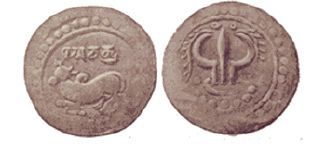
One of the Hindu Coins of Arakan.
Sanskrit Inscription of Virchandra
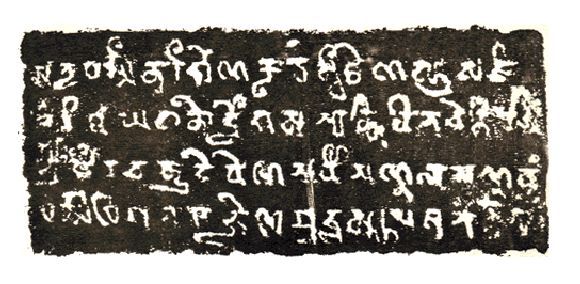 |
When did Rakhine become Arkanese?
Rakhine is said to have derived from the ancient flame of the land Rakasa (Pali), Rakhasha (Sanskrit). First it became Rakhit. Then Rakhain.1 Both Dr. S. B. Kunango and Pamela Gutman say the name Rakhuin, Rakheng were found in Myanmar inscription from 12th to 15th century. Dr. Kunango says perhaps the name Rakhaing was given to the Arakanese by Burman2.
Formerly in India as well as in the west, Rakhine is known as “Magh”. The new English Dictionary states, that the word Mog, Mogen, Mogue (“Bengali Magh”) appears as name of Arakan and the people there, in fifteen and sixteen centuries.3.
Ref:
1. (a) History ofBurma Vol. 1 Compiled by BSPP. (b) Major Bashin, Myanmar Naing Ngan before Annawrahta. (c) Naing Pan HIa (Formerly a member of Myanmar History Commission), article in working Peoples Daily (10/12/77).
2. Dr. Kanungo; History of Chittagong Vol. A 1978.
3. Foot note in the article King Berring, JBRS fiftieth anniversary publication No. 11, P- 443.
All of the Myanmar historians confirmed that Theraveda Buddhism was introduced in Myanmar by Anawratha former Anuradha who converted Hinduism to Buddhism. 100% of Rakhine believe Theravada Buddhism. Rakhaing scholar, U Tha Hla, has recently explained that the Rakhaings are Buddhists who have embraced Theravada discipline….The Buddhist cultnre forms the main fabric of the society and dominates the attitude of the people. No Rakhaing professes any other religion but Buddhism.
Ref: Tha Hla, "The Rakhaing," Rakhaing Guardian1.1 (Spring, 1997).
According to historical records, Rakhine came into existence after Anawrath’s invasion of Arakan State. Among the many Burman invasions, there had been three major recorded attacks on Arakan. First was by Anawrahta in 1044 A.D. and the second invasion was by Min Khaung Yaza’s invasion in 1406 and the third major invasion was by Budapawa in 1784.
Anawrahta’s Invasion of Arakan (1044)
Anawrahta (1044-77), by killing his own brother claimed the throne of Northern Burma for himself. He made Theravada Buddhism as the dominant political religion of Burma. It was in 1044 A.D. he invaded Arakan. Anawrahta, who also destroyed the Mon kingdom in the South, was known as one of the most violent kings of Burma. Ironically he also introduced Buddhism in Burma. He gave Buddhism, (originally a nonviolent religion,) a racial and political dimension in Burmese politics.
Anawrahta was known as a “religious fanatic” and his attack of Northern Arakan left some mark in this direction. At this time, the Chandra-Rohingyas (Hindu-Muslim mixed) population of Arakan were concentrated in the north was racially different from the Burmese population. The xenophobic king invaded Arakan as a mission to bring change from an Indianized population into an Asian variety and helped settle Tabeto-Burman Buddhist population. It was during his time that Chakmas, although racially mongoloid, but speaking a Chandra- Chittagonian language even felt threatned by the xenophobic invasion, left Arakan for Southern Chittagong.
Ref:
1. Origin of the Tribes of Chittaging Hill Tract (CHT)
2.History of Arakan by Rakhine State Council, 1984, P-71.
During the invasion of Arakan, the Burmese king took with him 3,700 Muslims and settled them in Mandalay. Some of them were known to even become the Ministers to the Burmese king. The decendents of the 3,700 Muslims are known as Thum Htaung Khunya (Three thousand seven hundred). For the continued oppression, in Southern Chittagong, a term was coined for Arakan of now Burma as the “Moghur Mulluk” meaning the land of lawless people, generally referring to the Burmese oppression of the time. The Arakaniese Muslims and Hindus that continued to escape to Chittagong resettle there were called by the Chittagonian Bengalis as the “Rohi”. “During the seven years of their operation, the population of Arakan was reduced by no less than half. During the early months of 1884, a quarter of a million {refugees took shelter} in the English territory of Chittagong.”
Ref: Pamela Gutman; Ancient Arakan P- 74
When did the word Rohingya come into existence?
Arakanese Muslims were called in many different ways; Muslims, Mohamaden, Muhamedan, Bagalis, Chittagonian, Rohan, Roshan but the word Rohingya was used in 1732 for the first time.
Ref:
1. Churchill, collection of voyages and travels London 1732, Vol-6, page-697
2. The Classical Journal for September and December 1811, vol-4, London, Page- 107
I shall now add three dialects, spoken in the Burmese empire, but evidently derived from the language of Hindu nation.The first is that spoken by Mohammedans, who have been long settled in Arakan, and who all themselves Rooinga, or native of Arakan.
Ref: Asiatick Researches; or Transactions of the society instituted in Bangal, for inquring into the History and Antiquities, 1801, vol-V ,page-237
According to Myanmar Immigration Act of 1982 also, Rohingya are the earliest indigenous race in Myanmar.
U Ba Shin, an Arakanese Muslim, a member of Council of National Education, sincerely involved in 1920 College Strike against British. The first Chairman of Union of Yangon University was U Htun Sein, an Arkanese Muslim.
According to A. P Phayer and G.E. Harvey, the Arakanese kings established alternately capitals in eight different towns, transferring from one to another. They were successively at Dinnyawadi, 25 kings (146-746 AD); Vesali, 12 kings (788-994 AD); First Pyinsa (Sanbawut), 15 kings (1018-1103 AD); Parin, 8 kings (1103-1167 AD); Krit, 4 kings (1167-1180 AD); Second Pyinsa, 16 kings (1180-1237 AD); Launggyet, 17 kings (1237-1433 AD) and Mrauk-U, 48 kings (1433-1785 AD).
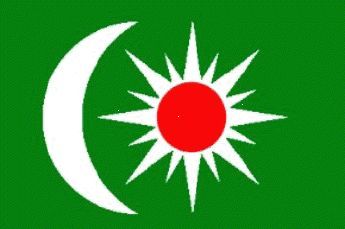
The Arakan Flag Design During Sanda-Thu-Ri-Ya King Arakan to Rakhine state: In 1974 the Burmese Socialist Programme Party (BSPP)government of Ne Win constituted Rakhine State from Arakan Division to restoration of Rakhine Independence. The government also created 17 townships before this changes. More in 1983, Thandwe, Gwa, Taungup, Ponnagyan townships were defined as Muslim-free Zones by government.
When Ibne-Batutah visited Chittagong in about 1350, he described it as a great place situated on the shore of the Great sea and he mentioned that it was under the rule of Muslim King. This conquest of Chittagong by the Muslim king had taken place during the rule of the Arakanese king Mingai (Minhti 1279-1374) of Launggyet dynasty, when he courted the alliance of the sultans of Bengal.
Ref: Chittagong Gazetteer, p-20&21
Later on during the first decade of the 15th century A.D. one of his successors Narameikhla fled to Bengal when he was ousted by the Burmese and however with the help of Bengal in 1430 he was reinstated as the vassal of the sultans of Gaur. From this time the Arakanese kings used Muslim titles and even their medallions bore the Kalima, the Muslim confession of faith in Persian character.
Ref: Harvey; Outline of Burmese History, p-92
Arakan as an Islamic State
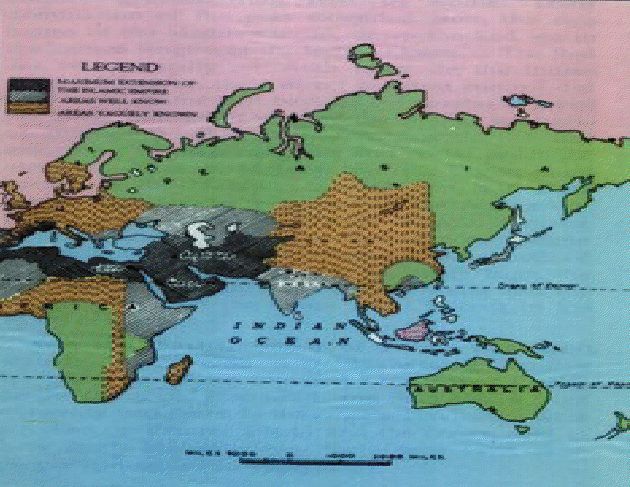
A map in the book Muslim contribution to the geography by Dr Nafis Ahmed. London. Indicating Arakan as a well known region to the Muslims since 8th century AD P-121
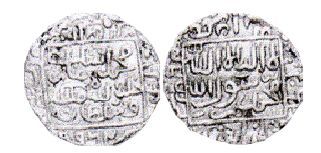
Coin of Mohammad Shah (1554-55) with Persian inscriptions which include mint name reading “Arakan” and dated 962 AH.
Mohammad Shah was succeeded by his son Gyasuddin Bahadur Shah (1555-60) who also struck coins in his name and mint name Arakan in 965 A.H. (1558) which proved that Arakan was under the effective control of Afghan Sultans of Bengal till 1560. It is strange that this conquest of Arakan by the Afghan Sultans of Bengal has not been mentioned in Arakanese chronicles. Chittagong was held by the Afghan Kings of Bengal till 1580 in which year the Tippera Raja Amar Manikya occupied it.
A map showing South-East Asia during 500 and 1500 A D as appeared in the Time Atlas of World History indicating Arakan as an independent Muslim kingdom
 |
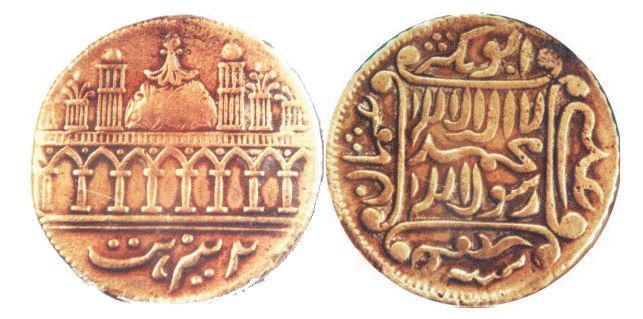 |
1. Indicates the Prophet's Mosque of Madina, Saudi Arabia
2. In the square of the center, it is the verse of declaration of Muslim faith i.e. the Kalimah
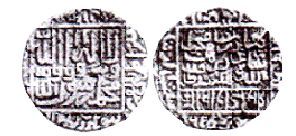 |
Coin of Bahadur Shah (1555-60)with Persian inscriptions which include mint name reading “Arakan” and dated 965 AH.
Ref: S.B. Qanungo; A History of Chittagong, Vol: I, p191-200, 1922.
Two more kings, Min Saw Hla (1555-64) and Min Sekkya (1564-71)sons of Min Teikkha became kings with the Muslim names. But Min Saw Hla’s Muslim title was not found yet while Min Sekkya’s Muslim designation was Ilahi Shah.
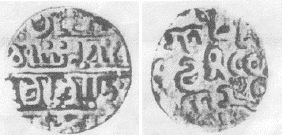 |
Coin of Min Sekkya (Ilahi Shah) 1564-7 A map showing cultural divisions of South-East Asia in 15th century A.D. as appealed in the Time Atlas of World History indicating Arakan as an Islamic State by Geoferry Banadough P-133
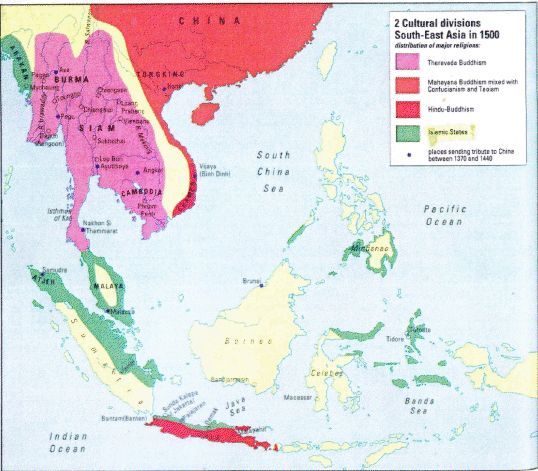 |
Then Minphalaung (1571-93), the youngest and the worthy son of Minbin ascended the throne in 1571. He conquered whole of Chittagong and several parts of Noakhali and Tippera in 1582. His Muslim name was Sikandar Shah.1 He appointed his son Minnala as governor of Chittagong. He excavated lakes and built causeways across them for the protection of his capital from the surprised attacks made by the Burmese and the hill tribes who raided the country plundering villages and carrying off the villagers as slaves. 2 Since then Arakanese kings kept Chittagong for 84 years till 1666 when it was finally annexed by the Moghuls3.
 |
Coin of Minphalaung (Sikandar Shah) 1571-93
Ref: R.B. Smart; Burma Gazetteer, Vol A,p.25
Prabashi, Part XXII, Vol: II, No.5, February, 1923. 50th Anniversary Publication No.2, BRSJ, P.494.
On the death of Minphalaung in 1593 his son Minyazagyi (1593-1612) became king with the Muslim title Salim Shah I who had become powerful very swiftly.
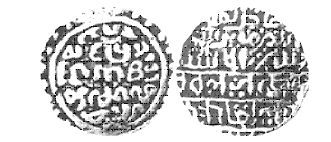 |
Coin of Minyazagyi (Salim Shah 1) 1593-1612
All these jewels were seen by Manrique, the Portuguese friar when he visited king Thirithudamma in 1630 when he gave five taslims ( five times of Salaams ) 1 to the king. In addition to these jewels he saw a great quantity of golden flasks and ewers. The captured Muslims among the defenders of Pegu in 1599 were taken away to Arakan2 and settled at Urittaung and along the Mayu river together with other prisoners of war3.
Ref:
1. Maurice Collis; The fand of the Great Image, p.188.
2. Harvey; History of Burma, p.348.
3. U Aung Moe; Okka Pyan of Dinnyawaddy, The Working Peoples Daily dated 30th November, 1987, p.5.
When Wahid and his soldiers rushed the Arakanese king and the Arakanese armies left Bhalua. Then the Moghuls reoccupied Bhalua and defeated the Arakanese not once but several times, and pursued them up to the walls of Chittagong. Wahid was honoured with the title of Shahad Khan.
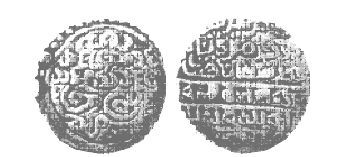 |
Coin of Minkhamaung (Hussain Shah) 1612-22
During the reign of Thirithudamma there were settlements of merchants of various nationalities, most of whom were Muslims. 1 It is worthy of note that Muslims fulfilled official tasks in the royal court throughout the Myauk-U era in the administration, in the army, and in various economic activities. Hence the Arakanese king Thirithudamma had appointed a Muslim counsellor. Muslim poets and writers were famous at the court of the Arakanese kings. Subsequently, Muslim civil servants were also employed by the kings, as an example controllers of Muslim quarters called Kaladan that is “ foreign dewellings” were Muslims’ bearing the title of Kalawun.
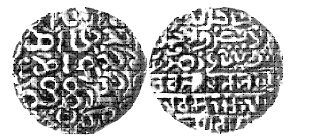 |
Coin of Thirithudamma (Salim Shah II) 1622-38
There were Muslim doctors in the Royal Court of Arakan. One of them who was the possessors of magical secrets was well-established in Thirithudamma’s confidence. The Arakanese called him Saragri. He came to Myauk-U during the fine season of 1634. Mauricc Collis states, “It seems that during the fine season a Mohammedan had visited Myauk-U, a man who declared that he had made the pilgrimage to Mecca and passed himself off as a doctor and the possessor of occult secrets. He effected a number of cures and acquired the reputation of a master of magic. News of what claimed to be able to do reached the king’s ears and was summoned to court... the doctor, as we shall call him , for we may be quite sure that the Arakanese referred to him by their term Saragri, was well established in the King’s confidence”2.
Ref:
1. Old Burma, p.35.
2. A Nation within a Nation, UNHCR, Report, June, 1998, p.38.
The land of the Great Image, p. 246-249
Note: There is no explanation about these coins in U San Tha Aung's "Rakhine Coins"
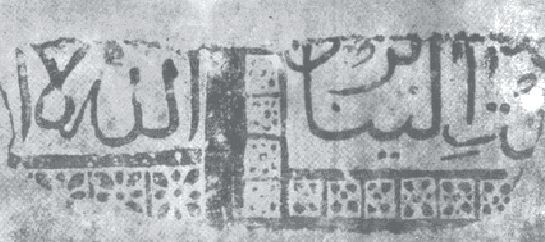 |
A Stone inscription with Arabic script found in the compound of Theingyi Taung Pagoda and preserved in Mrauk-U Museum.
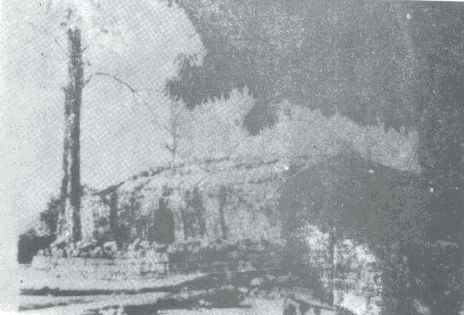 |
Sandhi Khan Mosque built in 1433 A.D at Mintayabyin, Mrauk-U by Muslim army who came to help enthrone Narameikhla (The founder of Mrauk-U dynasty)
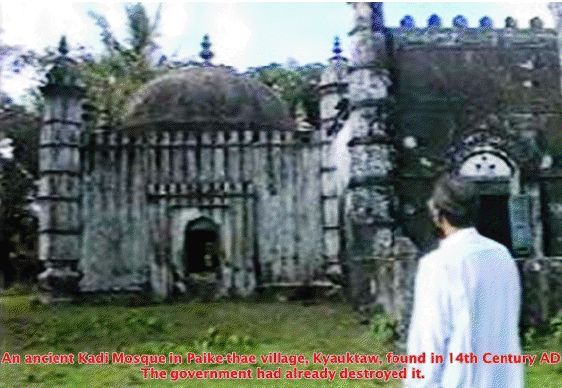 |
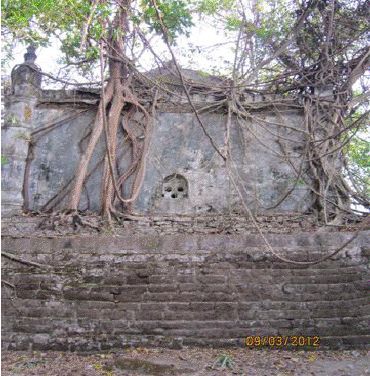 |
Historic Badar Mukam built on the southern side of Akyab Island in 1727 A.D
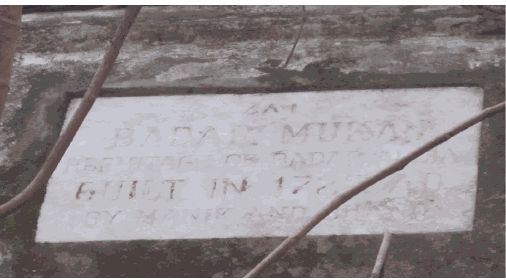 |
The Mongolians freely intermarried and intermixed with the Hindus and slowly a new race called the Arakanese came into being. So the Rohingyas and the Arakanese are the pots of the same clay. There is Hindu and Mongolian blood in their veins. The history of Arakan in connection with the Arakenese began since then and lasted eight centuries until 1784, when the country was annexed by Bodawpaya (1782-1819) of Burma 1.
The Mongolians cut Arakan away from India (and Bengal)as they successfully established their kingdom. They were uncivilized people and their incursion led Arakan into a period of darkness2.
Ref:
1.Maurice Collic, Into Hidden Burma, p. 134, A Brief Note on the old Capitals of Arakan.
2.This 50th Anniversary Publication No. 2 of BRSJ. p- 488
CENSUS OF ARAKAN
Despite the various changes in the different methods of their enumeration, the census reports since 1872 reveal that the Muslim population in Arakan “has followed a natural line of growth as an integral part of the country”1. They had increased not because of uncontrolled and excessive immigrants or other unnatural causes but because of the population of Arakan and Burma had increased. In 1826 the total population of Arakan was one hundred thousand including 60,000 Arakanese, 30,000 Muslims and 10,000 Burmese. These were the indigenous population. In 1835 this had risen to 211,536. In 1845 the population numbered 309,608 which in 1855 reached 366, 3102.
In 1886 the population of Upper Burma was 3,000,000 while lower Burma had a population of 3,736,771 souls3. The Census Report of 1931 recorded that the total population of Burma numbered 14,653,977 while the Muslim population was 584,8394.
1. Meer Sulaiman, Muslims in Burma, Islamia School Annual Number, 1935.
2. Albert Fytch, Burma Past and Present, Vol:II, pp.288-290.
3. Daw Ni Ni Myint, Burma’s Struggle Against British Imperialism, pp.84,85.
4. Islamic Culture, Vol: X, No.3, July 1936, p.409. The Coming of Islam to Burma dwon to 1700 A.D.
The Muslim population of Akyab district who in 1872 numbered 58,255 had by the year 1901 risen to 154,887 which at the census of 1911 had increased to 178,647.
Ref: Burma Gazetteer, Akyab District, Vol: A, pp.83,86.
"When Bengal was strong, its rulers received the tribute of Arakan; at other times Arakan claimed tribute from parts of the Ganges delta. These fluctuations of power affected Chittagong, which was held alternatively by one side or the other."
Ref: D.G.E.Hall; Burma, p-57.
The Meghna River was a natural barrier against the Muslim advance to the southern part of Bengal till the 14th century A.D. But there was free commercial intercourse of the Arabs who were the masters of the Western and Eastern Waters.7.
Ref: G.E.Harvey; history of Burma, p-10.
Massacre of Rohingya in 1942
When the British withdrew, the administration of Arakan Division was entrusted to a Magh Buddhist, U Kyaw Khine, who was vested with the power of Commissioner of Arakan Division. This made the Maghs extremely happy. The Thakins who had been wanted by the government for various crimes came out of their hiding and started indulging in looting and plunder. Muslims were their natural victims. Before the Japanese bombed Akyab, most of the Muslims from different towns and villages left for their homes for fear of the rumor of an imminent anti-Muslim rioting going to break out in Akyab. The Japanese bombed Akyab on March 23, 1942 killing many British, Gorkha, Rajput and Karen soldiers. Many British soldiers left leaving behind a large quantity of assorted arms. Some misguided Karens sold or gave arms to the Magh fanatics bolstering their strength.
Ref: Massacre in Arakan in Urdu by Mohammed Khalilur Rahman translated by Mr. Shabbir Hussain, p. 5
The Thakins also seized all the arms of Township Officers, Police officers, and Police constables which were left by the British to take care of the security of the public. Moreover the Magh Commissioner, U Kyaw Khine, supplied the Thakins a boat-load of arms and ammunition at Kyauktaw and Minbya.12 Thakins had also seized all the licensed firearms of the Muslims. Now the Thakins have become well armed whereas the Muslims are left barehanded only with the spirit of Iman (faith). The Muslims have utterly failed to recognise the impending disaster. They nurtured fanciful thoughts of facing the enemy and some even hoped that they would be protected by their Magh friends. The Muslims were not organised and there was no one to guide them. In the meantime full preparations were being made by the Maghs to attack the Muslims. They held a secret meeting at Minbya and came out with the following resolutions:
More than 100,000 Muslims were massacred. Thousands of Muslim villages were destroyed. The Muslim majority areas in the east of Kaladan river had turned into a Muslim minority area. But the loss in terms of human civilisation and moral values is much greater. The 1942 massacre impressed such an indelible black mark in the minds of Arakanese that the reminiscence of which shall serve as a constant source of impediment for a long way in the process of rapproachment between the two sister communities living together in Arakan from time immemorial.
Ref: Massacre in Arakan in Urdu by Mohammed Khalilur Rahman translated by Mr. Shabbir Hussain, p. 5-10
Rohingya villages destroyed in 1942 massacre
Name of | Mye- | Min- | Pauk- | Myo- | Kyauk- | Punna- | Rathe- | Buthi- | Maung- | Total |
Townships | bon | bya | taw | haung | Taw | gyun | daung | daung | daw | |
Villages | 30 | 27 | 25 | 58 | 78 | 5 | 21 | 55 | 8 | 307 |
The 6000 Rohingya refugees of one camp are still in East Pakistan scattered all over Chittagong district because U Kyaw, the then Commissioner of Arakan at Akyab not only bitterly refused to take them back but also said to one Mr. Gundivia, the representative of the Indian Government, who came to Akyab and saw the former in connection with these refugees while the Indian Government decided to close down the refugee camps, that he would not allow the steamer to enter the Akyab Port with the refugees in question.
Ref: Mr. A. Ghaffar Press Conference given on the 21st. April, 1960.
Rohingya and Parliament democratic period
The Sir Ba Oo Commission was formed by Prime minister U Nu under the Chairmanship of the then Chief Justice, Sir Ba Oo, in October, 1948 under which three sub-committees for dealing with the question of Karen, Mon and Arakanese nationals respectively were formed. Each sub-committee is constituted by one representative from the State, three Burman representatives and four national representatives from the concerned area.14
Ref: Myanmar Politics 1958-1962 Vol. 111, pp. 178-179
The 4-member Arakanese national representatives are U Kyaw Yin, U San Tun Aung, U Tha Tun and Mr. Sultan Ahmed. They submitted their opinion on 29th October, 1948 as follows:
1. to appoint an Arakanese affairs minister and include it as a Law in the Constitution
2. to constitute an Arakanese affairs council to assist the Arakanese affairs minister and include it as a Law in the Constitution;
3. according to clause 12 of the Constitution, to make rules, regulations and laws to be able to perform all activities of Arakan region by the Arakanese affairs minister and Arakanese affairs council in accordance with the wish of Arakan people;
4. after five years this scheme depending upon its results shall either be re-examined and amended in accordance with the wish of Arakan people or terminated.
Ref: Myanmar Politics 1958-1962 Vol. 111, pp. 180
U Shwe Baw, The Arakanese (Rakhaing) representative of the Committee submitted the following proposals:
1. to exploit the natural resources of Arakan and improve industrialisation;
2. to improve the water, land and railway communications of Arakan;
3. to upgrade education standard including higher and technological education;
4. to improve the health and treatment facilities;
5. to improve the agricultural and aquatic enterprises
6. to deploy one or two Rakhaing battalions in permanent Army to carry out law and order in case any border problem arises in Burma’s northwest frontier;
7. to give necessary powers for rehabilitating the Rakhaing nationals living in ‘Bomang State’ (Chittagong Hill Tract) and Awa Kyun (Sundarbons);
8. to award the power of making laws and collection of revenue and
9. to grant Self rule’ in every affairs of Arakan division
Ref: Myanmar Politics 1958-1962 Vol. 111, pp. 181
Muslims would be completely free to develop their own special Rohingya language and culture, and to spread their religion. A special officer for Muslim Affairs would be appointed whose job it would be to investigate complaints and obstructions, and to report on them to the chief of ‘State’. For a period of ten years from the date of establishment of the ‘State’ the right would be reserved to every district — and especially to those of northern Arakan— to secede from the ‘State’ and transfer itself to the direct jurisdiction of the Central government in Rangoon.
Ref: The Muslims of Burma by Moshe Yegar p. 104
Rohingya language programme was regularly broadcasted from Burma Broadcasting Service (BBS), Rangoon from 15-5-1961 till its abolition on 1-10- 1965.
The effects of military coup on Arakan
In March 2, 1962 Gen. Ne Win, the then Burma’s Army Chief, seized power in a bloodless military coup; abolished the Constitution and dissolved the Parliament. All powers of the State — legislative, judiciary and executive —had fallen automatically under the control of the Revolutionary Council’ (RC) headed by him.
Ne Win now well entrenched in power, started to take action against his old eyesore, the Rohingya Muslims of Arakan. Notifications were sent by Revolutionary Council to Arakan division authorities to restrict the movement of the Muslims. The State controlled media began attacking Rohingya Muslims branding them as aliens. Ne Win himself, while talking to newsmen, used sarcastic language against Rohingyas. He opined that the Arakanese Buddhists should take appropriate steps against these Kalas. The term Kala’ is generally applied to mean ethnic Indians irrespective of religion. It also implies the meaning of foreigner and carries a sense of sarcasm.
In 1974, the BSPP convened the first Peoples Congress (Pyithu Hlut law) which ratified the constitution drawn by BSPP. The new constitution granted ‘State’ to Arakan in the Unitary structure. The new ‘Arakan State’ was manned by hundred percent Buddhist authorities with Burmans in the top echelons and local Buddhist Arakanese in the lower strata. The ‘Arakan State Council’ was dominated by pro-Burman Arakanese Buddhists who tightened the screw against the Rohingyas further. Armed operations in the name of so-called immigration inquiry continued. Oppression of Muslims took a serious turn. Educated Rohingya youths were humiliated and denied of any government job. Trade and business are almost totally shut down for Rohingyas. Discrimination of Muslims, lack of security of life and property added by serious unemployment encouraged many Muslims to migrate either across the border into Bangladesh or infiltrate into proper Burma by bribing Burmese officials. The outflow of Muslims increased as the life span of the BSPP prolonged.
Ref: Outrage, Burmas Struggle for Democracy by Bertil Lintner p. 595.
A short History of Arakan and Rohingya by NDPHR, p. 42
'I Have never heard the name Rohingya” – Xenophobia or Racism!
Thursday, 08 December 2011 15:59
Abid Bahar Ph.D.
1.Well, the above can't be my statement. Those of you, who know me, know I have been working with the Rohingya people and on Burma for the past 31 years. So I have heard the name “Rohingya” many times. But surprisingly some Burmese people, who lived with the Rohingya people in Arakan and in Burma all their lives are of the claim that they have never heard of the name "Rohingya. It is as if saying “I have never met my brother, I have never seen my sister or even saying I have never seen my neighbor;” It sounds strange to me but not funny. Such assertion about an ethnic group aimed at intentionally ignoring them because you dislike them is called xenophobia, fear of the stranger. When Rohingyas as Burmese are made into strangers by the Rakhine gentlemen like Aye Kyaw, Aye Chan and the monk Ashin Nayaka, it is more than xenophobia; it is racism. It is a matter of extreme intolerance: an idea that also goes against even Buddhism.
2. The fact is Arakan had an Indian kingdom first Hindu, later on Mohayana Buddhist (See the history of Mohamuni of Buddha statue now in Mandalay, see in the research work of Martin Smith "Muslim Rohingya of Burma, 1995). About Buddhism, this is similar to Mohayana Buddhism in Bengal of the time. The Rakhines (also known as the Moghs, identified in British history) took their official name Rakhine during the 40's was recorded in history (not in Aye Kwaw's proto-history) to have entered Arakan with Theravada Buddhism in the 10th century, much later than Rohingya Muslim's arrival in Arakan in the 8th century.
3. Surprisingly, the name "Rohingya" was heard by Francis Buchanan in 1798 in Burma, recorded in Francis Buchanan, in Southeast Bengal (1798): His Journey to Chittagong, the Chittagong Hill Tracts, Noakhali and Comilla, (Dhaka: Dhaka University Press, 1992), 82. It is true, Rohingyas look more like the Bengalis across the border from Burma but, Jacques Leider calls Arakan a "frontier culture." And it is true, Rohingyas are as if the Shans of Burma who have their Thai cousins across the border. But that doesn’t make Rohingyas non Burmese.
Unlike the Myanmar administrations they are not liars like Thein Sein himself who paints the prisoners of conscience as criminals and launched an all out war to the Kachin while talking peace with them. This is understandable as “Lying the very Concept of Truth” is the norm of every Myanmar administration.
Burma’s Ethnic Nationalities Grievances By Prof. Kanbawza Wi Burma's first dictator, Ne Win, engineered citizenship laws to justify the expulsion of hundreds of thousands of Rohingya -- a policy he proposed in the wake of the mass expulsion of Indians in the 1960s and a ban on Muslims joining the army and government. This was an ideological crusade led by a notorious xenophobe who orchestrated Burma's retreat into isolation and economic ruin. That the pro-democracy forces now call for similar measures against the Rohingya has merely helped to rekindle his legacy.
How Burma’s pro-democracy movement betrayed its own ideals and rehabilitated the military BY FRANCIS WADE | JULY 5, 2012
Awakyunetha Bangali Rakhine and their mission
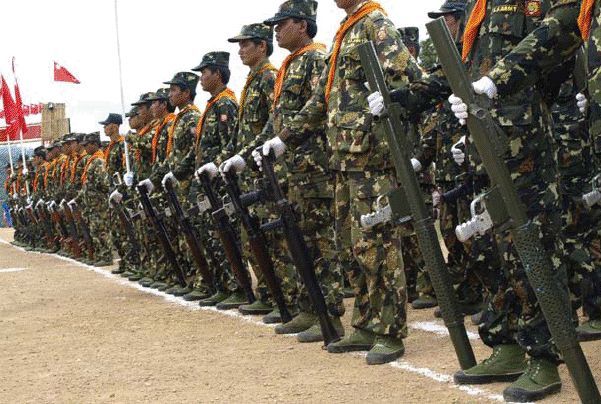 |
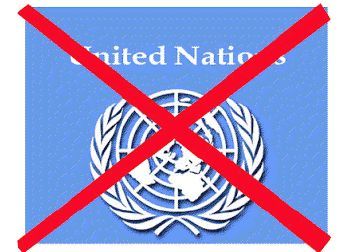 |
This picture is copied from Arakan Army Website.
Awakyunetha is a name given by original Rakhine natives to those Rakhine who entered after 1974 when Rakhine was promoted Rakhine State. Their first leaders are Dr. Aye Chan, Dr. Aye Kyaw , Dr. Aye Muang and Ashin Nayaka. Those leaders trained a lot of students all over the world according to their mission. Their mission is clearly mentioned in their WebPages; Arakan Army, Rakhapura Media Group, Narinjara, Arakan Media Group, Eleven Media Group, and Rakhine Bloggers. There is also Rakhine Myoromaha Web Page which means the best human race. They call Arakan Father Arakan like German Aryan, not like Rohingya; Rohingya call Mother Arakan.
Awakyunetha succeed to unify all Rakhine Buddhist including Marama because of their religion, Buddhism. They have their own authority, own police, Arakan Liberation Army, and their strong media, unlike Rohingya. Rohingya have nothing at all; no protection, no right, and even no fundamental human right. Rakhine Buddhists are proud of being Aryan like Hitler's followers. Most of their activities' bases are in Bangladesh as it is a democratic country, they can do freely there. Their main mission is to make Arakan an independence Rakhine Pray.
Rohingya is their obstacle toward independent State, so their first target became Rohingya. On the other hand, Myanmar dictators are enemy of democracy , Rakhine and dictators gathered together to clear this obstacle. Basically, Rakhine hate Bamar, Rakhine call Bamar Auakchi in their language that means lower filth. Rakhine are supporting dictators to clear Rohingya first, later they will fight to dictator too. In the Arakan Army Web, they announced openly their main agendas in their language. Like Aryan of Germany, Rakhine Buddists are racists, they think that Arakan is only for them, no Muslim can live there. They succeeded in three township clearing Muslims, they call those places Muslim-free places. Their main mission is to make Arakan as a Muslim-free Buddhist Independent State. Rakhine Buddhist main slogan "Wherever we are, the only place we call home is Father Arakan."
Rohingya have been continuously begging, crying, appealing, and requesting to the World in order to get only fundamental right which deserve every single human on Earth. They have been demanding according to the International Declaration of Human Right. For many decades, Rohingya people have been suffering, we could not see any international organization which tried to solve Rohingya’s problem. Whenever severe persecution was faced, International society, and media talk two three weeks, after then, government and Rakhine increase their speed of persecution.
Current crisis in Arakan State
Following communal violence in June, largely directed against the ethnic Rohingya, there is a growing humanitarian and human rights crisis, which is not receiving sufficient international attention, and it is highly likely that nearly 10,000 lives are being lost as a result.
In the past few weeks Burma Campaign UK has received the following reports:
Burmese police, security forces and soldiers are raping, looting, torturing and arbitrarily killing Rohingya people. There have been mass arrests with Rohingya people kept in detention camps without trial, without food or medical services.
Around 100,000 internally displaced Rohingya people, are in various locations and not getting enough, or even any aid. The government is blocking aid, and where aid is being delivered mostly Rohingya are being excluded.
Local authorities are refusing to allow many Rohingya people back to some villages, shops or homes in a policy that appears designed to ‘cleanse’ these areas of Rohingya people. The President of Burma has proposed a policy that amounts to ethnic cleansing, asking the United Nations to arrange for Rohingya people to be placed in camps, removed from Burma and sent to third countries.
This is an incredibly serious situation and it continues to deteriorate at a very fast rate. Yet there has not been anything like the international response that would be expected for a crisis on this scale. Action needs to be taken now to ensure aid can be delivered, arrests and human rights abuses stop, and people are allowed to return safely to their homes.
Britain used to take the lead in mobilising the international community to respond to human rights and humanitarian crises in Burma. We need you to resume that leading role again.
We urge you to use every diplomatic and legal tool at your disposal to help bring an end to the current crisis, including;
Britain and America must draw international attention to the current crisis by strongly condemning the blocking of humanitarian aid, the human rights abuses committed by police, army and security forces, and by rejecting proposals for all Rohingya to be expelled from the country.
You should withdraw the invitation to President Thein Sein to visit the UK and USA in order to bring home to him the seriousness of the current situation and the fact that proposing ethnic cleansing is completely unacceptable.
Britain and USA must also push for discussions and action at the United Nations Security Council and other UN bodies.
Britain and USA must mobilise the international community to pressure President Thein Sein to allow aid to be delivered to the 140,000 displaced people. Lives are being lost every day while the UK, USA, EU and rest of the international community fail to take sufficient action to end this crisis. We urge you to act now, and we look forward to your response.
Yours sincerely
Zaw Lwin Oo
For more detail information regarding Rohingya people, please feel free to contact to the following persons:
- U Kyaw Myint @ Mr. Anwar , President of National Democratic Party for Human Right, Phone- 0973247887, Yangon
(The elected MP from National Democratic Party for Human Rights (NDPHR) and a member of the Committee Representing People’s Parliament (CRPP) was detained on 17 March 2005. He was sentenced to 47 years imprisonment on 29 July 2005. His wife, two daughters and a son were also sentenced to 17 years respectively)
- Mr. Tun Khin, President of Burmese Rohingya Organization UK (+44 7888 714866 ortunkhin80@gmail.com), or Mr. Nay San Lwin, who lost his families to violence (lwin.ns@gmail.com).
- Mr. Abu Tahir, Secretary of National Democratic Party for Development, Phone – 095187834 , Yangon.
I don’t involve any political party, I give you their contact number in order to confirm my claim.
Edited by Tim King, Salem-News.com
 |
 |
 |
 |
 |
 |
 |
Articles for July 26, 2012 | Articles for July 27, 2012 | Articles for July 28, 2012
Quick Links
DINING
Willamette UniversityGoudy Commons Cafe
Dine on the Queen
Willamette Queen Sternwheeler
MUST SEE SALEM
Oregon Capitol ToursCapitol History Gateway
Willamette River Ride
Willamette Queen Sternwheeler
Historic Home Tours:
Deepwood Museum
The Bush House
Gaiety Hollow Garden
AUCTIONS - APPRAISALS
Auction Masters & AppraisalsCONSTRUCTION SERVICES
Roofing and ContractingSheridan, Ore.
ONLINE SHOPPING
Special Occasion DressesAdvertise with Salem-News
Contact:AdSales@Salem-News.com

googlec507860f6901db00.html



Terms of Service | Privacy Policy
All comments and messages are approved by people and self promotional links or unacceptable comments are denied.
[Return to Top]
©2025 Salem-News.com. All opinions expressed in this article are those of the author and do not necessarily reflect those of Salem-News.com.